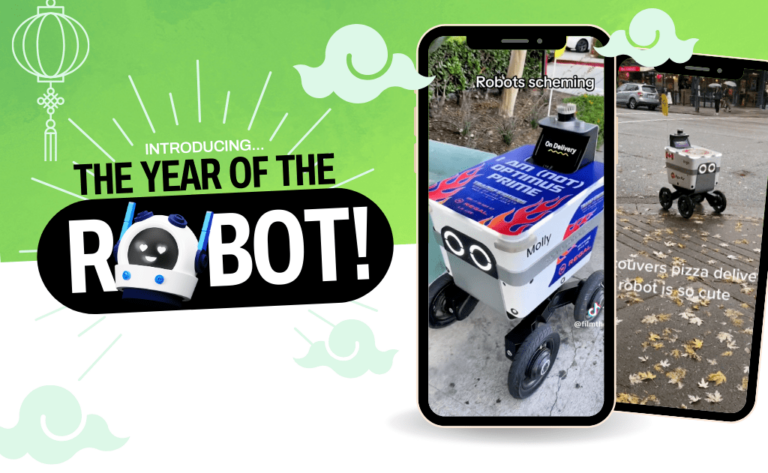The digitization of OOH advertising is changing people’s perceptions of the traditional marketing medium. Out-of-home advertising is one of the oldest forms of advertising, and it has helped 96% of marketers achieve their ROI goals. Out-of-home advertising has advanced to the point that its performance is comparable to broadcast and digital advertising but at a fraction of the cost.
In a report released by AdQuick, it is noted that “businesses, brands, and agencies are giving OOH a more prominent spot in their media mixes.” Also, they are making their processes more efficient by using online OOH procurement systems that help them plan, launch, measure, and improve their outdoor advertising campaigns.
Despite these advancements, several misconceptions are shared among businesses and marketers about OOH advertising. In this article, we separate fact from fiction and set the record straight.
Myth 1: OOH Advertising is Expensive
This is a common misconception about out-of-home advertising. People often assume that OOH advertising is too expensive for most businesses.
In the survey done by AdQuick, many people said that their budget was the biggest thing keeping them from investing more in OOH. Yet, the average CPM of outdoor media is less than $5.
The truth is that the cost of out-of-home advertising can vary greatly depending on the ad’s location, size, and length.
OOH advertising can be relatively affordable compared to other advertising methods, especially for businesses looking to reach a large audience.
For example, a month-long billboard ad campaign can reach thousands of people daily and cost much less than a television or online campaign of the same duration.
Also, businesses can choose to advertise in less popular places, which can cut the ad cost while still getting a lot of attention. With this, OOH advertising can augment other types of advertising, like digital media, to make a marketing campaign more effective and reach more people.
Myth 2: OOH Advertising is Not Effective
Another myth about OOH advertising is that it is less effective than other advertising methods, such as digital or television advertising. However, this is far from the truth.
OOH advertising has been proven to be highly effective in capturing the attention of consumers and driving engagement. Studies show that people remember OOH advertising well and that it can leave a lasting impression on them.
The DOOH market was valued at $18.8 billion in 2020, and it is expected to rise with a compound annual growth rate (CAGR) of 11.6% from 2021 to 2030. 91 percent of advertisers think OOH can provide data for both the top and bottom of the funnels.
This makes it measurable in more ways than just money, including website and store visits. And what can be measured can be made more effective.
Myth 3: OOH Advertising Only Targets Commuters

While it’s true that OOH advertising can be targeted to specific locations, such as highways or busy city streets, the reach of OOH advertising is much broader than many people realize.
OOH advertising can reach a wide range of consumers, regardless of age, gender, or socio-economic status. For example, a billboard campaign can reach people of all ages and backgrounds who commute to work, shop, or participate in leisure activities.
Bus shelter advertising can reach people of all ages and backgrounds waiting for public transportation or taking a break from their daily routines.
In addition, OOH advertising can reach people who are not necessarily looking for it but are exposed to it. This is because OOH advertising is often placed in high-traffic areas where people are likely to see it regardless of their specific interests or needs.
Myth 4: OOH Advertising is Only for Big Brands

This misconception may have arisen because OOH advertising is considered more expensive than other forms. However, the reality is that OOH advertising can be tailored to meet the needs and budgets of businesses of all sizes.
Small businesses, for example, can focus on targeted campaigns in specific places, like bus shelters in a particular neighborhood, rather than large campaigns on highway billboards.
Myth 5: OOH Advertising is Outdated
In reality, OOH advertising continues to be a strong and growing industry, with consistent growth in recent years. According to industry reports, the global OOH advertising market is expected to grow significantly in the coming years. This growth is driven by technological advances and increased demand for effective and impactful advertising.
One of the reasons for the continued growth of OOH advertising is the increasing popularity of digital OOH advertising, which leverages technology to reach consumers in various environments.
Myth 6: OOH Advertising Can’t be Measured

Digital technology has made tracking and measuring the effectiveness of out-of-home advertising campaigns easier.
For example, DOOH advertising can be integrated with tracking tools like beacons or GPS to gather data on consumer behavior and engagement. This data can then be used to determine the effectiveness of campaigns and make informed decisions about future advertising strategies.
Also, tools like audience measurement systems can show how far OOH advertising campaigns reach and what kind of people see them. This helps businesses understand how their campaigns affect their target audiences.
Myth 7: OOH Advertising Can’t be Targeted
OOH advertising has evolved to encompass many advertising opportunities beyond traditional billboards and bus shelters. DOOH advertising provides a unique opportunity to reach consumers in high-traffic environments with highly engaging and interactive ads.
OOH advertising now includes alternative forms of advertising, such as experiential and immersive advertising, which seek to create memorable experiences for consumers that are closely tied to brands.
These types of advertising are growing in popularity as businesses look for ways to create lasting impressions with their target audiences.
Conclusion
Out-of-home advertising is a powerful and growing industry that continues to evolve with technological advances. Despite the misconceptions about OOH advertising, the reality is that this type of advertising remains a highly effective way to reach consumers in various environments.
In reality, OOH advertising is cost-effective, measurable, and trackable. Businesses are gaining valuable insights into the effectiveness of their outdoor campaigns contrary to popular belief.
Nickelytics offers great OOH advertising opportunities to help promote your business to a broad audience. We also provide an excellent interface that allows businesses to launch ad campaigns in minutes and track performance in real time.




